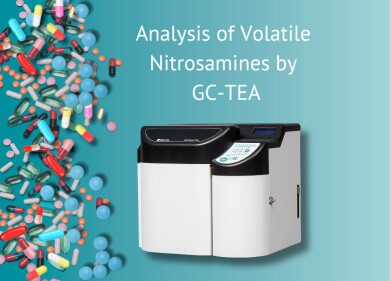Gas chromatography
Sheep, Cow or Goat: Which Milk Contains the Most Fat? - Chromatography Explores
Nov 27 2020
Get a drink of milk and most of us would assume that we’d get a drink that came from a cow. Of course, there are a wide range of alternatives out there. Nut and oat milks are increasing their market share as people seek vegan or animal free alternatives. But what about milk from other animals? In the UK, the focus is on cow’s milk, but other varieties are available including sheep and goat. In some areas of the world, it is milk from these animals that is the main source of milk. Could there be health benefits to drinking sheep or goat milk compared with cow’s milk?
A paper presented at the 12th International Scientific and Professional Conference ‘WITH FOOD TO HEALTH’ asks that very question. In the paper – Comparative Analysis of Conjugated Linoleic Acid in Cow, Sheep and Goat Milk – researchers from the Republic of North Macedonia used gas chromatography to analyse the potential health benefits of cow, sheep, and goat milk. Will it change what you put on your cornflakes?
Double-single-double makes for healthier milk
Foods containing bioactive properties have received attention in recent years. They are compounds found in foods that can alter the metabolic process and help to promote a healthier lifestyle. Although mainly associated with foods derived from plant-based sources such as whole grains, fruit, and vegetables; some bioactive compounds are predominantly found in animal-based products including probiotics, long chain omega-3 fats and conjugated linoleic acid compounds.
One of the bioactive groups found in milk-based products are CLAs. CLAs are conjugated linoleic acids that contain omega-6 fatty acids and are classed as polyunsaturated fats that are said to have beneficial effects. CLAs are geometric and positional isomers of linoleic acid, their double bonds are separated by a single bond – conjugated. Their potential health benefits include anticarcinogenic and antidiabetic properties. But what is the best source of CLAs – cow, sheep, or goat milk?
Chromatography analyses the CLAs
The researchers from the Republic of North Macedonia analysed 60 different milk samples from cows, sheep, and goats. The animals were from different breeders and grazed on pastures in a highland area of Pelagonia. The milk fat was extracted and converted to fatty acid methyl esters before being analysed using gas chromatography with a flame ionisation detector (GC-FID). The use of GC is discussed in the article, Analysis and Identification of Mezcal and Tequila Aromas by Ambient Ionisation MS, GC-MS, and GCxGC-MS.
Milk fatty acid composition depends on many factors including nutrition and genetics. The researchers report sheep milk had a higher content of conjugated linoleic acid compared to cow and goat milk. Milk fat is the richest natural dietary source of CLAs according to the report’s authors and CLA content could be increased using breeding and feeding regimes
Events
May 11 2025 Vienna, Austria
May 18 2025 Tempe. AZ, USA
May 21 2025 Birmingham, UK
Jun 01 2025 Baltimore, MD, USA
Jun 15 2025 Bruges, Belgium


.jpg)











